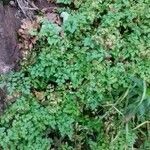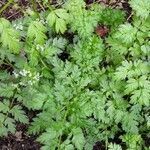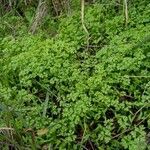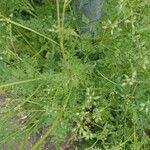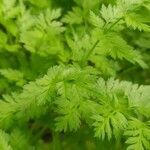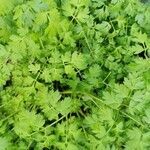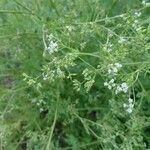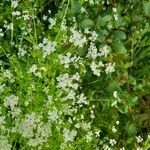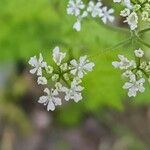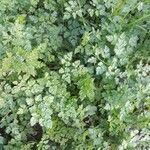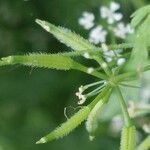Herb, somewhat hirsute. Stems 25-50 cm, striate and grooved. Lower leaves with petioles to 7 cm with sheathing base, upper leaves subsessile to sessile on the sheaths; lamina 4-11 by 3-15 cm, triangular in outline, bi-to tripinnate, primary leaflets ovate, obtuse, ½-2½ cm petiolulate, secondary leaflets ovate, pinnatipartite, with obtuse tips. Compound umbels sessile in a di-monochasium; rays 3-5, 5-25 mm; pedicels 4-9, 2-4 mm, to 5 mm in fruit; involucres absent; involucels 3-4, nearly 2 by 3-4 mm, lanceolate, acute with narrow membranous margin. Petals nearly 1-1½ by ½-1 mm, white, obcordate with short inflexed tips. Mericarps 5-6 by 1 mm, sometimes antrorsely hirsute when unripe, black and finely granular when ripe, grooved inside, with a beak to 2½ mm; disk flat.
More
An annual plant with feather like leaves. It grows about 45-60 cm high. It spreads about 30 cm wide. The leaves are pale green and compound. They are divided into narrow segments. Most plants have a few hairs. The flowers are small and white. The fruit are oblong, dry and have a beak. They are 10 mm long. There are some named cultivars.
The leaves have an anise flavour and are used in salads. The leaves are used in French cooking. They can also be cooked as a potherb. The leaves are also dried and stored for later use. They are added to meat and fish as a garnish. They are also used in soups. The flowers are used as a seasoning. The roots are eaten.
